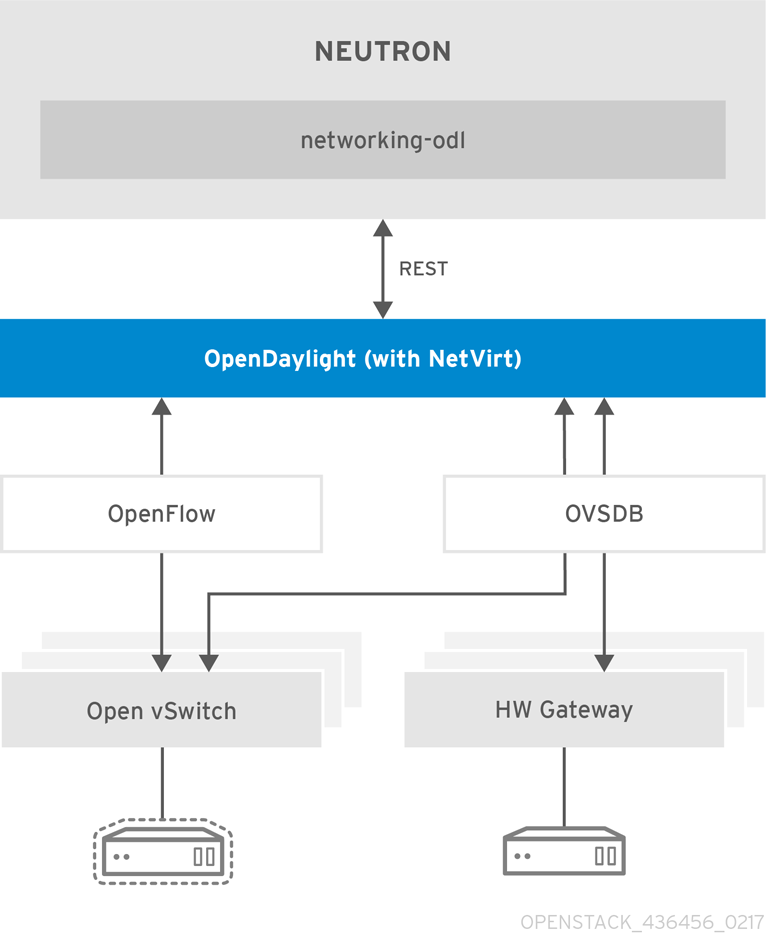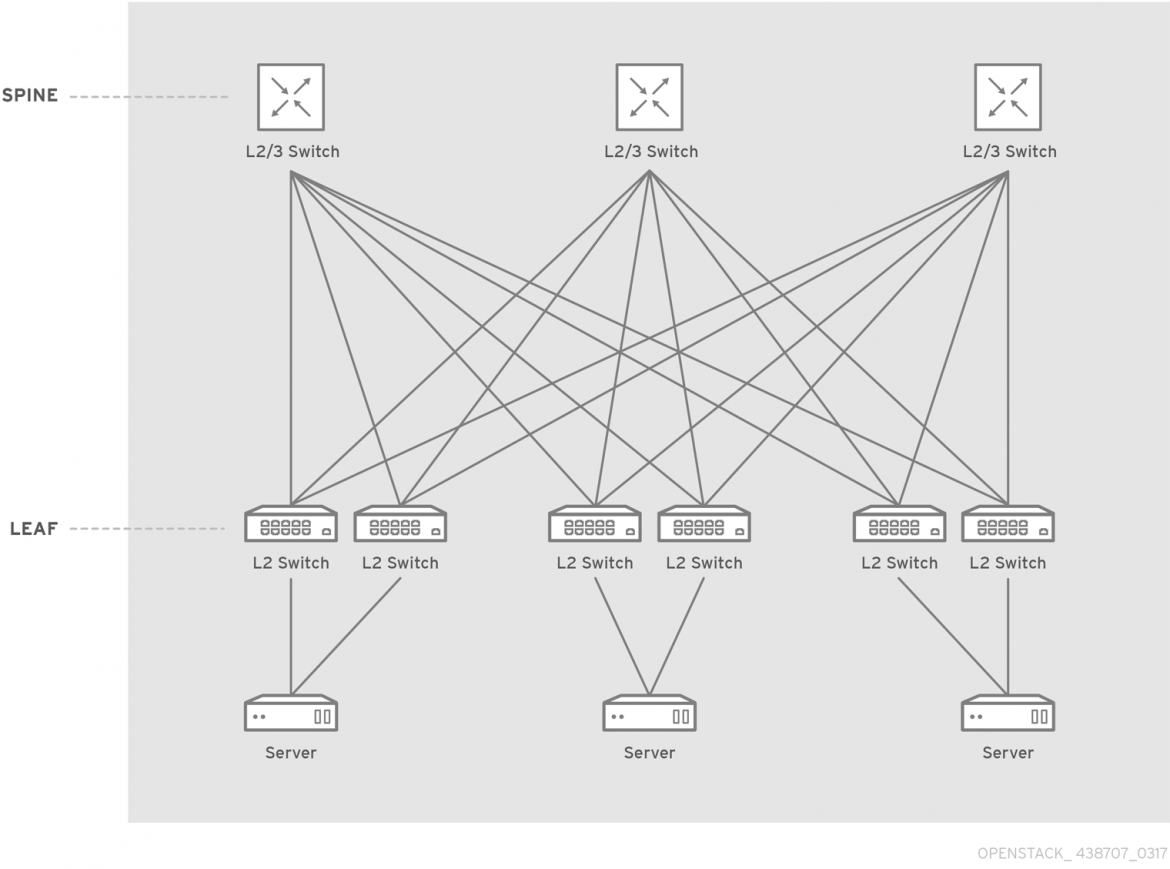Red Hat 블로그
Red Hat OpenStack Platform 13, based on the upstream Queens release, is now Generally Available. Of course this version brings in many improvements and enhancements across the stack, but in this blog post I’m going to focus on the five biggest and most exciting networking features found this latest release.
ONE: Overlay network management - bringing consistency and better operational experience
Offering solid support for network virtualization was always a priority of ours. Like many other OpenStack components, the networking subsystem (Neutron) is pluggable so that customers can choose the solution that best fits their business and technological requirements. Red Hat OpenStack Platform 13 adds support for Open Virtual Network (OVN), a network virtualization solution which is built into the Open vSwitch (OVS) project. OVN supports the Neutron API, and offers a clean and distributed implementation of the most common networking capabilities such as bridging, routing, security groups, NAT, and floating IPs. In addition to OpenStack, OVN is also supported in Red Hat Virtualization (available with Red Hat Virtualization 4.2 which was announced earlier this year), with support for Red Hat OpenShift Container Platform expected down the road. This marks our efforts to create consistency and a more unified operational experience between Red Hat OpenStack Platform, Red Hat OpenShift, and Red Hat Virtualization.
OVN was available as a technology preview feature with Red Hat OpenStack Platform 12, and is now fully supported with Red Hat OpenStack Platform 13. OVN must be enabled as the overcloud Neutron backend from Red Hat OpenStack Platform director during deployment time, as the default Neutron backend is still ML2/OVS. Also note that migration tooling from ML2/OVS to OVN is not supported with Red Hat OpenStack Platform 13, and is expected to be offered in a future release, and so OVN is only recommended for new deployments.
TWO: Open source SDN Controller
OpenDaylight is a flexible, modular, and open software-defined networking (SDN) platform, which is now fully integrated and supported with Red Hat OpenStack Platform 13. The Red Hat offering combines carefully selected OpenDaylight components that are designed to enable the OpenDaylight SDN controller as a networking backend for OpenStack, giving it visibility into, and control over, OpenStack networking, utilization, and policies.
OpenDaylight is co-engineered and integrated with Red Hat OpenStack Platform, including Red Hat OpenStack Platform director for automated deployment, configuration and lifecycle management.
The key OpenDaylight project used in this solution is NetVirt, offering support for the OpenStack Neutron API on top of OVS. For telecommunication customers this support extends to OVS-DPDK implementations. Also available in technology preview, customers can leverage OpenDaylight with OVS hardware offload on capable network adapters to offload the virtual switch data path processing to the network card, further optimizing the server footprint.

THREE: Cloud ready load balancing as a service
Load balancing is a fundamental service of any cloud. It is a key element essential for enabling automatic scaling and availability of applications hosted in the cloud, and is required for both “three tier” apps, as well as for emerging cloud native, microservices based, app architectures.
During the last few development cycles, the community has worked on a new load balancing as a service (LBaaS) solution based on the Octavia project. Octavia provides tenants with a load balancing API, as well as implements the delivery of load balancing services via a fleet of service virtual machine instances, which it spins up on demand. With Red Hat OpenStack Platform 13, customers can use the OpenStack Platform director to easily deploy and setup Octavia and expose it to the overcloud tenants, including setting up a pre-created, supported and secured Red Hat Enterprise Linux based service VM image.
 Figure 2. Octavia HTTPS traffic flow through to a pool member
Figure 2. Octavia HTTPS traffic flow through to a pool member
FOUR: Integrated networking for OpenStack and OpenShift
OpenShift Container Platform, Red Hat’s enterprise distribution of Kubernetes optimized for continuous application development, is infrastructure independent. You can run it on public cloud, virtualization, OpenStack or anything that can boot Red Hat Enterprise Linux. But in order to run Kubernetes and application containers, you need control and flexibility at scale on the infrastructure level. Many of our customers are looking into OpenStack as a platform to expose VM and bare metal resources for OpenShift to provide Kubernetes clusters to different parts of the organization - nicely aligning with the strong multi-tenancy and isolation capabilities of OpenStack as well as its rich APIs.
As a key contributor to both OpenStack and Kubernetes, Red Hat is shaping this powerful combination so that enterprises can not only deploy OpenShift on top of OpenStack, but also take advantage of the underlying infrastructure services exposed by OpenStack. A good example of this is through networking integration. Out of the box, OpenStack provides overlay networks managed by Neutron. However, OpenShift, based on Kubernetes and the Container Network Interface (CNI) project, also provides overlay networking between container pods. This results in two, unrelated, network virtualization stacks that run on top of each other and make the operational experience, as well as the overall performance of the solution, not optimal. With Red Hat OpenStack Platform 13, Neutron was enhanced so that it can serve as the networking layer for both OpenStack and OpenShift, allowing a single network solution to serve both container and non-container workloads. This is done through project Kuryr and kuryr-kubernetes, a CNI plugin that provides OpenStack networking to Kubernetes objects.
Customers will be able to take advantage of Kuryr with an upcoming Red Hat OpenShift Container Platform release, where we will also release openshift-ansible support for automated deployment of Kuryr components (kuryr-controller, kuryr-cni) on OpenShift Master and Worker nodes.
 Figure 3. OpenShift and OpenStack
Figure 3. OpenShift and OpenStack
FIVE: Deployment on top of routed networks
As data center network architectures evolve, we are seeing a shift away from L2-based network designs towards fully L3 routed fabrics in an effort to create more efficient, predictable, and scalable communication between end-points in the network. One such trend is the adoption of leaf/spine (Clos) network topology where the fabric is composed of leaf and spine network switches: the leaf layer consists of access switches that connect to devices like servers, and the spine layer is the backbone of the network. In this architecture, every leaf switch is interconnected with each and every spine switch using routed links. Dynamic routing is typically enabled throughout the fabric and allows the best path to be determined and adjusted automatically. Modern routing protocol implementations also offers Equal-Cost Multipathing (ECMP) for load sharing of traffic between all available links simultaneously.
Originally, Red Hat OpenStack Platform director was designed to use shared L2 networks between nodes. This significantly reduces the complexity required to deploy OpenStack, since DHCP and PXE booting are simply done over a shared broadcast domain. This also makes the network switch configuration straightforward, since typically there is only a need to configure VLANs and ports, but no need to enable routing between all switches. This design, however, is not compatible with L3 routed network solutions such as the leaf/spine network architecture described above.
With Red Hat OpenStack Platform 13, director can now deploy OpenStack on top of fully routed topologies, utilizing its composable network and roles architecture, as well as a DHCP relay to support provisioning across multiple subnets. This provides customers with the flexibility to deploy on top of L2 or L3 routed networks from a single tool.

Learn more
Learn more about Red Hat OpenStack Platform:
For more information on Red Hat OpenStack Platform and Red Hat Virtualization contact your local Red Hat office today!
